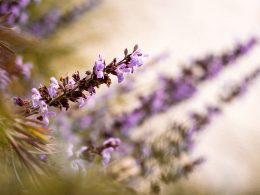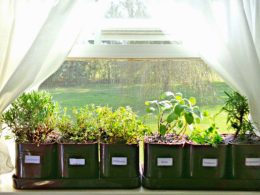Are you interested in starting a garden but not sure where to begin? Whether you have a green thumb or are a complete beginner, this guide will help you start your very own garden from seed to sprout. Gardening is not only a fun hobby but also provides fresh produce and adds beauty to your home. With the right tools and knowledge, anyone can create their own thriving garden oasis. So grab your gardening gloves and let’s get started!
What is a garden?
A garden is a piece of land, usually located outdoors, that has been cultivated for the purpose of growing plants such as flowers, fruits and vegetables. Gardens can be created in various sizes ranging from small balcony gardens to large community gardens.
Gardens are not only a beautiful addition to your home but also provide numerous benefits such as fresh produce, increased air quality and stress relief. They offer a peaceful retreat where you can connect with nature and enjoy some quiet time away from the hustle and bustle of daily life.
There are different types of gardens including flower gardens which typically feature an array of colorful blooms, vegetable gardens where you grow edible plants for consumption or herb gardens which focus on cultivating herbs used in cooking or medicinal purposes.
No matter what type of garden you choose to create, it’s important to take into consideration factors such as sunlight exposure, soil conditions and water availability when planning out your garden space. With proper care and attention, anyone can cultivate their own beautiful garden oasis.
The different types of gardens
Gardens come in all shapes and sizes, and there are many different types to choose from depending on your personal preferences. One type of garden is the vegetable garden, which consists of plants that produce fruits or vegetables that you can eat. These gardens require regular maintenance such as watering, fertilizing and weeding.
Another popular type of garden is a flower garden. Flower gardens are aesthetically pleasing and add color to any landscape. They can be designed in a variety of ways using different colors, textures, heights, and fragrances.
For those who prefer low-maintenance gardening, a rock garden may be the way to go. These gardens consist mainly of rocks with small amounts of vegetation interspersed throughout.
Water gardens offer a peaceful oasis for relaxation with features like ponds or fountains surrounded by aquatic plants like water lilies and lotus flowers.
Herb gardens provide fresh herbs for cooking purposes while also being visually appealing with their varied foliage textures ranging from soft leaves like basil to spiky rosemary branches.
Whatever your gardening preference may be – there is always something out there that will suit your style!
How to plant a garden
Planting a garden can seem daunting, but with the right preparation and tools, it can be an enjoyable and rewarding experience. Here are some tips to get started:
Firstly, choose the location of your garden carefully. Ensure that it has access to adequate sunlight and water. Also, consider factors such as soil quality and drainage.
Next, decide on what type of plants you want to grow in your garden. Take into account the climate and seasonality of where you live as well as your personal preferences.
Once you have selected your plants, prepare the soil by removing any weeds or debris. Consider adding compost or fertilizer to improve soil quality.
When planting seeds or seedlings, remember to follow specific instructions for each plant’s individual needs regarding spacing depth and watering frequency.
Make sure to maintain proper care for your newly planted garden by regularly watering it at appropriate times during the day while keeping an eye out for pests or diseases that may affect its growth.
How to care for your garden
Now that your garden is planted, it’s important to care for it properly to ensure a bountiful harvest. Here are some tips on how to care for your garden:
1. Watering: Depending on the type of plants in your garden, they may need different amounts of water. It’s important to give them enough water without overwatering and drowning the roots. Water at the base of the plant rather than from above.
2. Weeding: Weeds can quickly take over your garden if left unchecked. Regularly pull weeds by hand or use a hoe for larger areas.
3. Fertilizing: Plants need nutrients to grow, so fertilize according to their specific needs using organic or synthetic fertilizer.
4. Pest Control: Keep an eye out for pests such as aphids or caterpillars that can damage plants and use natural pest control methods like companion planting or homemade sprays.
5. Pruning: Some plants benefit from pruning, which encourages new growth and helps with air circulation around the plant.
By following these simple steps, you’ll be well on your way to maintaining a healthy and productive garden all season long!
What to harvest from your garden
Once your garden is thriving, it’s time to reap the rewards of your hard work. Harvesting from your garden can be one of the most satisfying experiences you’ll have as a gardener. But what exactly can you expect to harvest from your garden?
First and foremost, vegetables are an obvious choice for any vegetable garden. Depending on the season and climate in your area, you could be harvesting anything from tomatoes and cucumbers to carrots and peas.
Herbs are another great option that can easily be grown in a small space. Basil, parsley, cilantro, and rosemary are just a few examples of herbs that thrive in gardens. Not only do they add flavor to dishes but also offer medicinal properties that make them even more valuable.
Fruit trees or bushes such as blueberries or strawberries will provide healthy treats straight off the plant during their respective growing seasons.
Flowers may not seem like an obvious choice for harvesting but they can serve several purposes beyond merely aesthetic value such as extracting essential oils for aromatherapy or making natural dyes for crafts projects.
Harvesting is an important part of gardening which provides nourishment for both body and soul so don’t forget to enjoy every step along this journey!
Conclusion
Gardening may seem daunting at first, but with the right tools and knowledge, anyone can start their own garden from seed to sprout. Whether you’re looking to create a small herb garden or grow your own vegetables, gardening offers numerous benefits such as improving mental health and providing fresh produce for your family.
Remember that planting a garden requires patience and consistent care. The key is to start small and gradually expand as you gain more experience. Make sure to choose plants that are suitable for your climate and soil type, water them regularly, fertilize when needed, remove weeds promptly, and protect them from pests.
In no time at all, you’ll be harvesting delicious fruits and vegetables straight from your backyard! So go ahead – grab some seeds or seedlings today and get started on creating the perfect garden oasis in your own home. Happy gardening!










